Chicken is a staple lean protein in many recipes because of its easy preparation and great taste, but it’s not as simple as it may seem. Unsure of the difference between light and dark meat, or how to tackle a whole chicken? Don’t worry, we’ve got you covered.
1. Breaking down a rotisserie chicken
[1] Hold the leg steady with a fork, and cut through the skin between the leg and body using a large knife. Slice through the hip joint and remove the leg from the body. Repeat with the other leg.
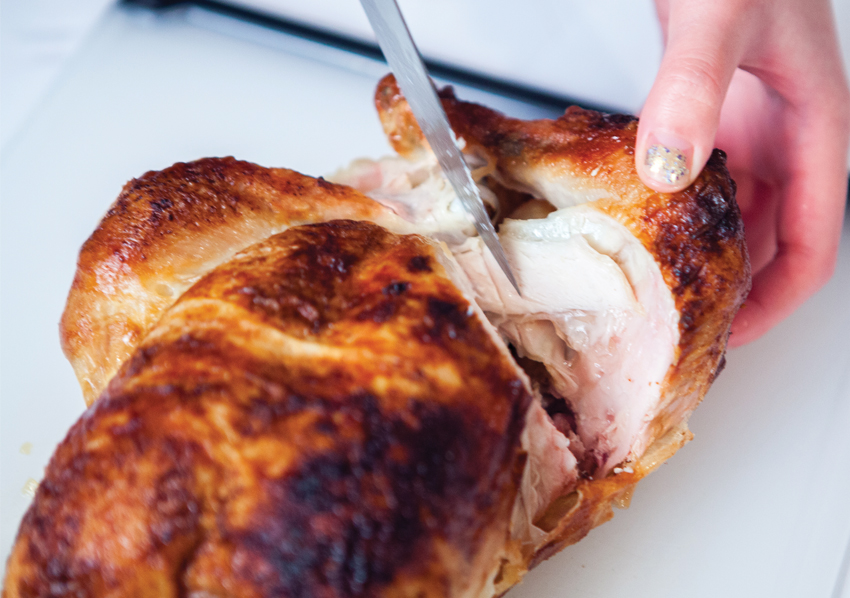
Photo by Daniel Schuleman
[2] Bend the wing away from the body, and remove it with the knife. Cut off the tips, if desired.
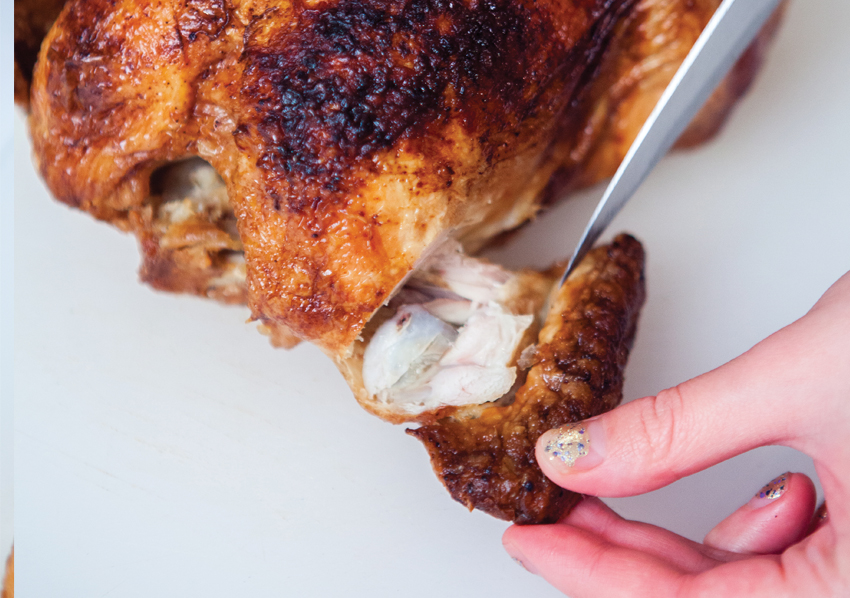
Photo by Daniel Schuleman
[3] Chicken with the legs and wings removed.
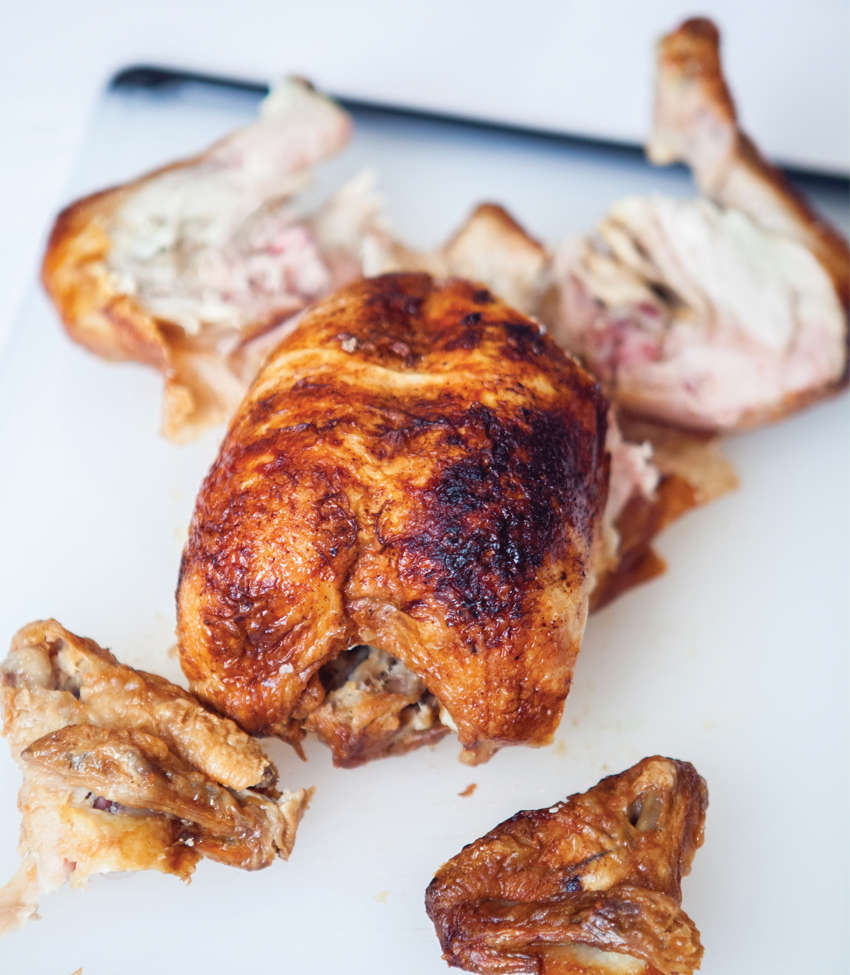
Photo by Daniel Schuleman
[4] Place a leg skin-side down and cut through the joint between the drumstick and the thigh. Repeat with other leg.
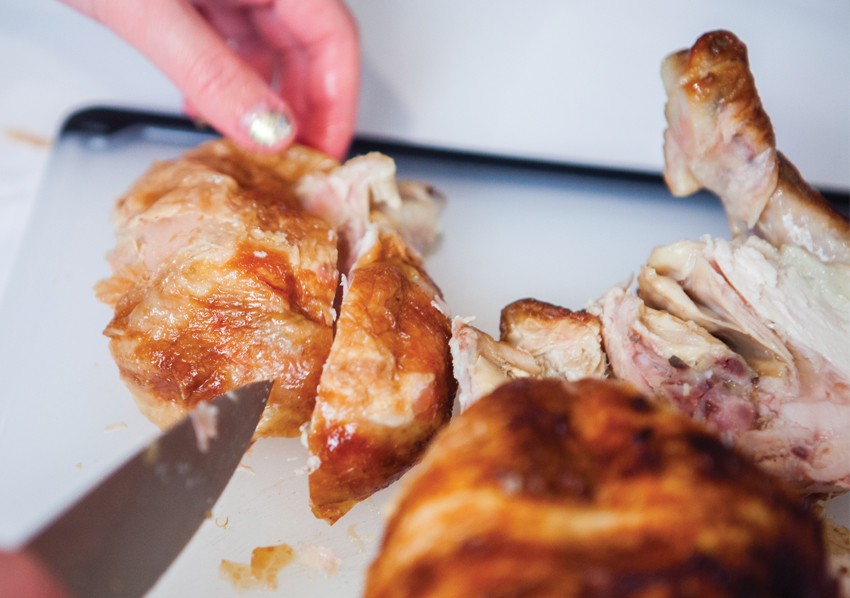
Photo by Daniel Schuleman
[5a] To remove the breast meat, make a cut down the center near the breastbone.
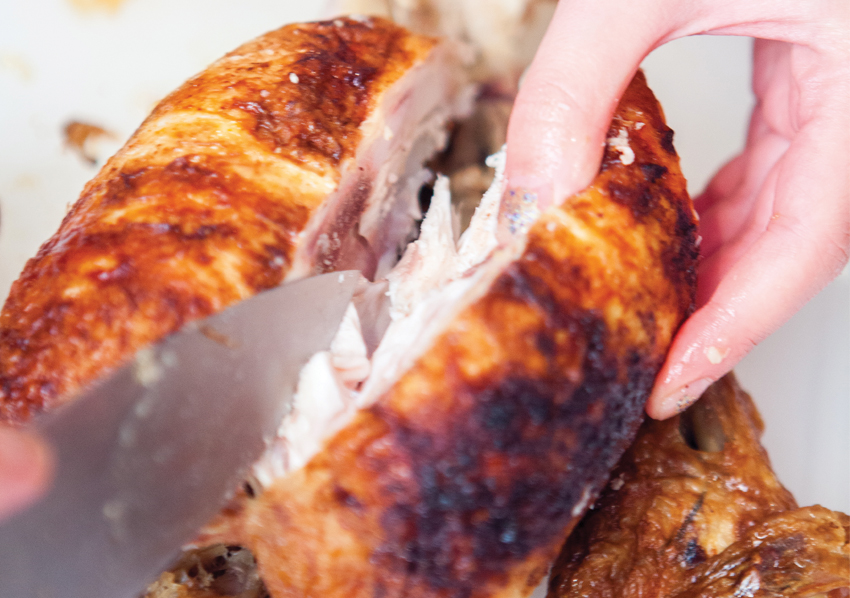
Photo by Daniel Schuleman
[5b] Cut along one side of the breast, gently pulling the breast away from the bone and slicing against the bone as you go. Repeat with the second breast.
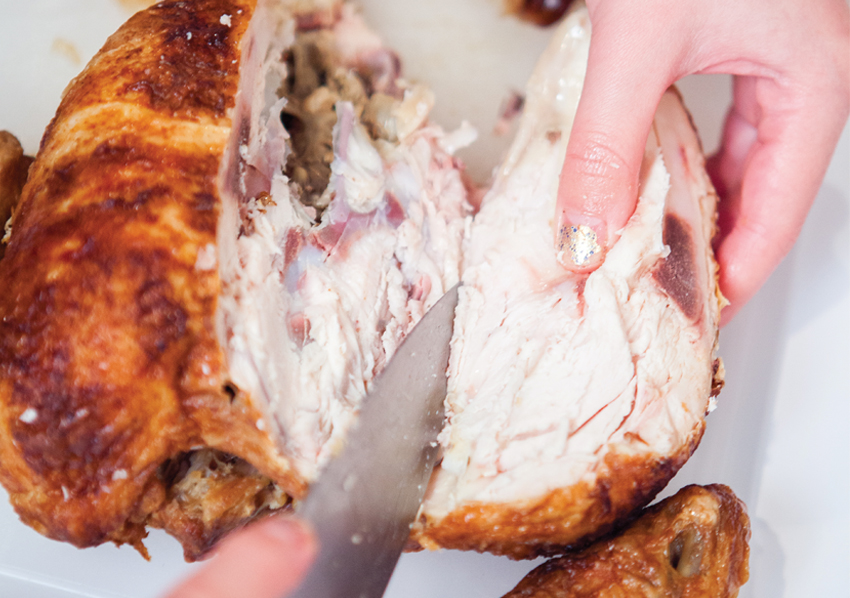
Photo by Daniel Schuleman
2. Cooking tips
Learn the lingo and a few tips to become a chicken-cooking expert.
Like your chicken crispy? Pat the meat and skin dry with a paper towel to reduce excess moisture for a crisp exterior.
Add chicken stock, butter and wine to the leftover bits of chicken stuck to the pan to make an easy sauce.
Flatten your chicken by pounding it to quicken cook time and ensure the chicken cooks evenly.
Rubs: Dry rubs are seasoning blends massaged onto foods and often include coarsely ground black or white pepper, paprika, garlic powder and crushed herbs. Paste rubs are dry seasonings held together with wet ingredients like oil, mustard or soy sauce.
Marinades: Try marinating chicken in a plastic bag overnight to avoid a messy clean up and to allow the flavor to sink in. Commonly used marinades include wine, lemon juice, buttermilk, oil and herbs.
Basting: Brush or pour liquids over the chicken as it cooks to preserve moisture and add flavor. Melted butter, pan drippings and broth can be used to baste chicken.
3. Sanitation tips
Chicken, like all meat, carries the risk of transmitting dangerous bacteria such as salmonella. Here are a few tips for preventing bacteria growth.
Keep raw chicken cold to touch; never allow it reach room temperature.
Fresh, raw chicken can be stored in its original packaging for up to three days in the refrigerator. If you do not plan to use it within two days, you can freeze the chicken for up to two months.
Thaw frozen chicken in the refrigerator; do not use a countertop or microwave. Pieces of the chicken such as the breast or thigh will take three to nine hours to thaw.
Do not rinse raw chicken because it increases the risk of dangerous bacteria spreading in your kitchen.
Heat the chicken to an internal temperature of at least 165°F to effectively reduce bacterial risk.

